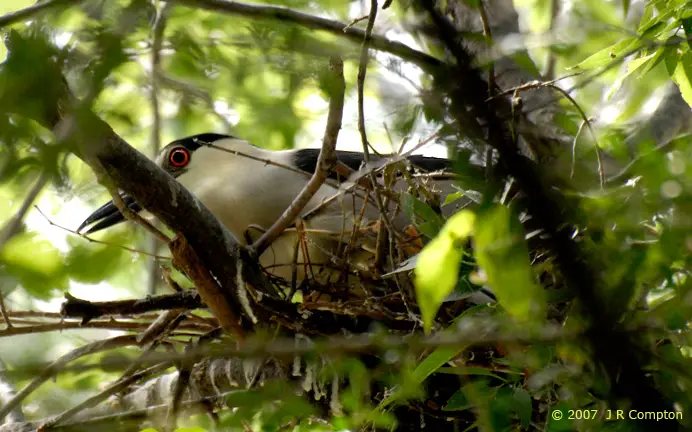Night Heron
The Night Heron is a species of bird that is widespread all around the world, except for Eastern Asia and Australia. They nest in all types of humid areas – river shores, swamps, ponds, lakes, smaller brooks and sea shores.
The bird is average-sized, reaching 58-65 cm in length and it weighs around 0,6 kilograms. It’s equipped with a strong beak and relatively short legs. The plumage varies from black with a metallic shine on the back and the head, to grayish wings, body and tail, with a white belly. During the mating period the males are complemented by a few luxuriant feathers stretching from their heads to the middle of the backs.
Night Herons are social birds that live in colonies of tens of birds, which all find a single “home tree” in which they spend their nights. They search for large trees with a thick leafage. They have not been observed to be aggressive towards other birds who decide to rest in the particular tree and often multiple bird colonies can have a single “home tree”. In many territories, the Night Herons migrate to warmer territories in the winter – populations living in North America spend the winter in Central America, while Asian populations migrate to Indonesia.
Their feeding time is at dusk and early in the morning. They may fly to distant territories in search of richer food sources. They slowly paddle through the water, catching fish. Sometimes, they will also swim into deeper waters. Although being a sociable bird, the Night Heron usually hunts alone and doesn’t share its prey with other members of the colony. When hunting, they sometimes use an interesting strategy – they put a piece of food or a feather on the surface of the water as a bait for fish, and then wait until one arrives. Heron’s diet consists mostly of small fish, frogs, water bugs and larvae. When feeding on dry land their prey is spiders, bugs, small rodents and birds. Sometimes, they become cannibals and ravage other Herons’ nests and eat the eggs.
The nesting period, which occurs in April to July, is initiated by the male, who finds a proper place for building a nest and courageously defends it from other rivals. The rut itself isn’t very complex, as the both to-be partners just clean each other’s plumage. After a partner has been found, the male constructs the foundation of the nest and handles the female straws and branches for her to finish what has been started. Every 48 hours, the female lays one egg, up to a total of 3-5 blueish green eggs. Both the parents warm them and the first chick hatches three to four weeks later. For three weeks they are fed mostly fish by the parents, and after that they can leave the nest and search for food on themselves.
Having moved in almost all territories of the world, the Night Heron is not endangered, although a number of populations in Europe seem to be on a decline.




